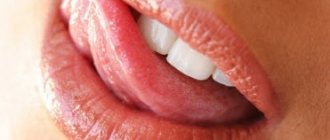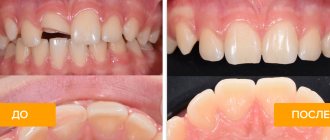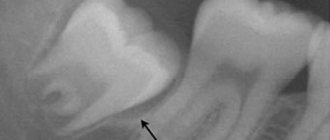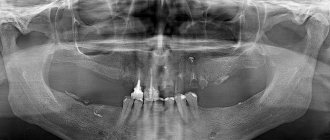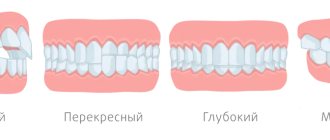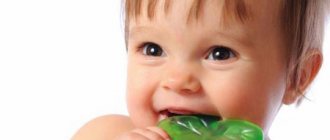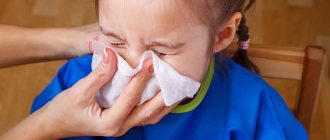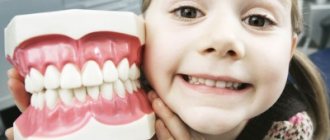Causes of dislocation Symptoms Classification Possible complications Diagnosis Treatment and prognosis If the tooth cannot be saved
Tooth dislocation is a dental injury in which an incisor or canine is displaced in the alveolus (socket) in a lateral or vertical position due to mechanical impact. Due to the peculiarities of the anatomical structure, the upper incisors and canines are more often exposed to such damage. Anatomically, each dental unit consists of a crown and a root. The coronal part is located above the gum, the root is in the jaw bone (alveolus, socket).
Between the alveolus and the root there is a periodontal ligament, consisting of connective tissue fibers. Intertwined with the alveolus and root cement, the periodontium holds the root in the jaw. The combination of 3 elements (alveolus, periodontium, cementum) is called the ligamentous apparatus of the tooth
. It can be injured due to a blow, biting on a hard product or object, resulting in dislocation or subluxation of the root, its disposition in the dentition. Traumatic tooth dislocation in the lower jaw is less common than in the upper jaw.
A timely visit to the doctor makes it possible to save the injured incisor and avoid removal. According to the severity of the injury, adequate treatment is carried out, including immobilization of the dental unit by fixing it to adjacent teeth. Even if the incisor has fallen out, but the root and crown are preserved, with prompt treatment it is possible to restore the tooth using replantation.
What is tooth luxation
Tooth dislocation is a traumatic injury, which is characterized by displacement of the crown and rupture of the ligamentous apparatus (periodontal). Such damage can occur in childhood and adulthood. Dental services include providing qualified assistance for any dental injuries.
Why do dislocations occur:
- Mechanical injury: if there is a blow or fall from a height.
- Eating too hard foods (fruit seeds, berries).
- Having bad habits: chewing pens, pencils, nut shells.
- Rough removal, resulting in injury to neighbors.
Diagnostics
An experienced doctor can detect a tooth dislocation with a simple examination. At the same time, he pays attention to the location of the dental crown and the characteristics of the damaged gum. However, there are cases when damage and deformation of the teeth may not be noticeable externally and, until subsequent symptoms appear, the dislocation may go unnoticed. This, in turn, will complicate further treatment.
To avoid such situations, it is important to additionally take x-rays of the teeth and jaw during the examination. It will not only confirm or refute the presence of a dislocation, but will also identify possible damage to the jaw or internal tooth tissues. This approach will allow you to choose the most effective treatment and make it possible to save the tooth itself.
Types of tooth dislocations
- Incomplete – there is a displacement of the coronal part, the surrounding gums are swollen, and there is redness.
- Complete dislocation - the tooth is missing in the socket. Bleeding gums and ruptures of the mucous membrane are observed.
- Impacted - the tooth is shorter than the rest or completely “hidden” behind the gum. Swelling and red gums.
The most common luxation of the front tooth occurs. In children, injuries occur much more often. The danger of childhood injuries to the oral cavity is that under the milk there is a rudiment of a permanent one. As a result: the permanent one will erupt in a modified form, or will not erupt at all.
Varieties
This disease is classified into:
- complete;
- incomplete.
In the first case, the disease forms after an absolute rupture of periodontal tissues and the circular ligament of the tooth due to a strong blow to the crown. Often there is damage to the upper jaw of the front teeth.
A complete dislocation clinically looks like this: upon examination, you can see that the tooth is missing from the dentition, and its socket is filled with a fresh blood clot and continues to bleed. Often there are concomitant injuries to the soft tissues of the lips - wounds to the mucous membrane, bruises, and so on. In order for the treatment to be complete and effective, the condition is assessed, namely the presence of carious cavities, the integrity of the root and crown, etc.
Incomplete luxation changes the position of the tooth in the row. The patient complains of mobility, pain, changes in his position and impaired chewing function. An examination of the oral cavity shows the displacement of the crown of the injured tooth in different positions. It can be highly mobile and very painful upon percussion, however, it is in its place in the dentition.
In this case, the gums are hyperemic and swollen, and ruptures may occur. Due to rupture of periodontal tissue, the circular ligament and damage to the walls of the alveoli, pathological dentogingival pockets can form, as well as bleeding from there. In the case of dislocation and oral displacement, its root is usually displaced vestibularly and vice versa. Often the patient has concomitant injuries - wounds, hemorrhages, bruises.
Symptoms of tooth dislocation
Symptoms of incomplete dislocation: pain while eating, red swollen gums, bruising. There is a displacement of the coronal part. Possible enamel chips or cracks.
When full:
- a bleeding hole is visible;
- the patient complains of severe pain, bleeding, swelling;
- with injuries in the frontal area, difficulties in pronouncing certain sounds are observed.
Complaints when injected:
- severe pain, especially when closing and eating;
- slight bleeding from the gums;
- swelling of surrounding tissues;
- the coronal part is shortened or completely hidden under the gum.
An orthopantomogram of the teeth - an x-ray examination of the jaws, where bone tissue and roots are visible - helps to establish a diagnosis and choose the right treatment tactics. It is often prescribed in childhood.
Prevention
Prevention of tooth dislocation includes:
- Explanatory work with employees of industries associated with increased injuries. Each employee is required to comply with safety regulations, which provide for an algorithm for performing certain actions and the use of protective devices.
- Explaining to parents and children the rules for arranging playgrounds and behavior on them, familiarizing themselves with possible types of injuries and methods of providing first aid if they occur. Parents should supervise young children during play.
- Educational work among the population about the need to comply with traffic rules by drivers and pedestrians, as this is necessary not only to reduce the level of injuries, but also to save lives.
- Compliance by medical personnel with the rules for performing dental procedures.
- Avoiding bad habits: you need to use special tools to open bottles and crack nuts.
- Avoiding situations that could lead to a fight; if it does occur, during it you need to tense your masticatory muscles and keep your teeth closed: this will help avoid not only dislocation of teeth, but also a fracture of the jaw.
- Providing a high level of protection for athletes involved in traumatic sports (hockey, boxing). For this purpose, helmets with full face protection and mouth guards are used (molded, which have a ready-made shape, and molded - after heating in hot water, they take the individual shape of the teeth).
What to do if a tooth is dislocated
If you have any injury, you should immediately make an appointment with a doctor. If a tooth falls out, you should save it and bring it to the clinic. Apply a clean gauze pad to the wound site for 10 minutes. This will help stop the bleeding.
If the pain is severe, you will need to take a painkiller. You should not take more than 2-3 tablets, as this will negatively affect the administration of anesthesia in the doctor's office. In case of an overdose of painkillers, local anesthesia (injection into the gum) may have a worse effect.
It is also recommended to avoid eating hard foods, as well as too cold, hot, or spicy foods. The rest of the recommendations will be given by the dentist after examination and diagnosis.
Additional treatments
Drug therapy
- When carrying out manipulations to reposition a tooth after dislocation, local anesthesia is used, for this purpose Ultracaine D-S, Ultracaine D-S Forte, Cytokartin, Septanest, Bupivacaine are used. But the effect of the anesthetic stops after some time, so painkillers from the NSAID group are prescribed: ibuprofen, nimesulide, ketorolac, dexketoprofen. Children are prescribed ibuprofen and paracetamol.
- To improve the condition of the gums after injury, use: Dentol Gel - has a local anesthetic effect.
- Gel Metrogyl Denta - contains two antibacterial components, eliminates inflammation.
- Kamistad gel is a combined drug: lidocaine has a local anesthetic effect, chamomile flower tincture produces antiseptic and anti-inflammatory effects, thymol has an antiseptic effect.
- Solcoseryl dental paste - stimulates regeneration processes in tissues, thereby shortening the healing period of wounds of the mucous membrane. The composition also includes polidocanol, a local anesthetic.
Physiotherapy
After acute phenomena have subsided, the following are used to stimulate healing processes and eliminate tissue swelling:
- UHF therapy is the effect on the body of an alternating electric field with ultra-high frequency.
- Microwave therapy – uses alternating electromagnetic oscillations of ultra-high frequencies of various ranges (centimeter, decimeter and millimeter).
- Magnetotherapy is the effect of a low-frequency magnetic field on the injured area.
- Magneto-laser therapy is a complex effect of magnetic and laser radiation.
Treatment of dislocated teeth
Traumatic tooth dislocation must be treated in a dental clinic. The doctor conducts an examination, clarifies complaints, and prescribes diagnostics. After this, treatment is prescribed.
Incomplete tooth dislocation requires fixation with wire splints. Such structures can remain in the mouth for several months. An orthopedic dentist installs a splint. Painkillers and anti-inflammatory drugs are prescribed. A gentle diet is required. Often, nerve removal and subsequent root canal filling are required. Splinting teeth in case of dislocation helps to avoid removal and other complications.
In case of complete dislocation, tooth reposition is sometimes used - its return to the socket. Regular monitoring of the patient's well-being is required. In other cases, implantation or production of prostheses (bridge or removable denture, depending on the clinical situation) is used.
Therapy for impacted nerves: removal of the nerve, splinting, diet. This form of injury is considered the most unfavorable.
An x-ray control is required: a repeat image after a few months to exclude inflammatory periodontal diseases.
Treat or remove?
If a patient has a dislocation, treatment is prescribed based on the degree of damage and the feasibility of restoring the damaged tooth. To begin with, the doctor must conduct a complete visual and x-ray examination to determine the condition of the bone tissue. If there is a high probability of successful healing of the dislocated tooth, it is carefully processed, disinfected and inserted into place. Further, reliable fixation by the splint and complete rest are ensured, eliminating any load and mobility of the damaged area.
If the pulp tissue has been damaged, which happens in most cases, the tooth must be depulped to prevent further necrosis. The same action is taken when restoring an impacted tooth to its place, in order to prevent blood from entering the dentinal tubules and further staining the enamel.
If the patient brings a completely dislocated tooth to the doctor as soon as possible (up to half an hour), there is a high probability of successful replantation surgery. To do this, the fallen tooth undergoes trepanation, depulpation, complete disinfection with antiseptics and canal filling, after which it is placed in place and carefully fixed.
In addition to fixation, the doctor prescribes examinations and x-rays to the patient to monitor the healing of the tooth over a fairly long period of time, in addition, a gentle diet may be prescribed. If replantation is not possible, the damaged tooth is removed and an implant is installed in its place. In rare cases of wisdom tooth dislocation, it is simply removed, since treatment is impractical and difficult to perform.
Questions and answers
If a tooth falls out due to injury, can you put it back in place yourself at home?
This procedure should not be performed at home. Such attempts will not give the desired result, but will lead to infection. You should contact your dentist immediately. Replantation is possible only in exceptional cases. In other cases, the patient will be offered prosthetics (bridge construction) or implant installation.
What diagnostics are needed for dislocations?
The dentist prescribes a computed tomography scan of the jaws - a three-dimensional image that will show whether there is damage to the alveolar process, roots, or whether there are changes in the periodontium. Computed tomography will help determine an accurate diagnosis and choose the right treatment tactics.
What are the complications of a dislocation?
If you do not consult a dentist in time, serious consequences of this injury will occur. Among the complications are inflammatory ones: pulpitis, periodontitis, periostitis, abscess. Children often experience a stop in the development of the permanent tooth germ. To avoid these complications, you should immediately contact your dentist.
How to protect yourself from dislocations when playing sports?
For this purpose, sports protective mouth guards are manufactured. You should contact an orthopedic dentist. Mouthguards are made individually for each patient based on casts of the jaws. Therefore, they are conveniently fixed on the jaws, do not create discomfort and reliably perform their protective function.
Consequences
In addition to the obvious consequences of injury, such as shortening of the tooth when impacted or its complete loss, there are also a number of troubles associated with the damage. Even if outwardly the tooth does not look damaged, at some point necrosis of the pulpal region may begin due to malnutrition, in which case severe changes occur in the periapical and periodontal tissues, ultimately leading to periodontal diseases.
Also, if a tooth is dislocated, the consequences can be more critical. For example, the risk of formation of pulp granulomas, root cysts, fistulas and even jaw osteomyelitis increases. If replantation of a dislocated tooth is unsuccessful, the bone tissue gradually dissolves, the tooth ceases to receive sufficient nutrition and, ultimately, dies.

